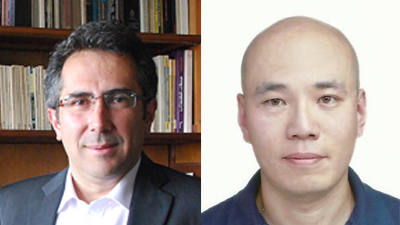Research in Progress: How can we prevent ‘fake news’ consumption?
June 6, 2018

By Hernando Rojas and Kwansik Mun, University of Wisconsin – Madison
The circulation and adoption of “fake news” and misinformation are detrimental to the functioning of any democratic system. In the communication ecosystem of the 20th Century, centralization in the distribution of information, and professional practices by journalists, sought to keep misinformation at bay.
However, in the 21st Century, emerging communication models have decentralized information distribution, accelerated the news cycle, and infused it with strategically placed misinformation that seeks to persuade rather than inform. Journalism practitioners have responded to these challenges by reaffirming their adherence to facts and expanding their role to more forcefully adjudicate when social and political actors deviate from said facts.
The 2016 U.S. presidential election highlighted the issue of false information—colloquially dubbed as “fake news”—and its influence on the political system. Of course, processes of misinformation are not new, but their latest scope, paired with the difficulty to control their dissemination in online social networks, have caught the attention of commentators and scholars worldwide. Of particular concern is the mobilizing and polarizing potential of ideologically consistent misinformation, as well as the possible cynicism and alienation from ideologically inconsistent misinformation.
These concerns about the effects of false information on news consumers’ attitudes and behaviors lead news media companies and non-profit organizations to collaborate more aggressively in checking facts. Fact-checking organizations, such as Factcheck.org, PolitiFact, and Fact Checker, now monitor the public sphere to correct news coverage that includes false claims by political and social actors.
However, a growing body of research that has examined the impact of fact-checking formats on correcting audiences’ false beliefs suggest that this process is fraught with difficulties. While media practitioners tend to think of “fake news” as that which is not aligned with facts, audiences tend to think of it as one that is not aligned with their preexisting beliefs.
In order to better understand, and hopefully contribute to reduce this gap between journalists and audiences our research project seeks to:
- Analyze a large body of fake news to have a better understanding of the formal characteristics of the phenomenon
- Based on these characteristics, conduct a series of experiments that help us understand how journalists and media companies can frame their fact checking messages to more effectively correct misperceptions among the public.
In order to reduce misinformation in the public sphere, we think it is fundamentally important for journalists and news media companies to frame fact checking messages more effectively. In this research we are particularly interested in exploring how episodic versus thematic framing (that is coverage that focuses on instances rather than patterns) and gains versus loss framing (that is coverage that emphasizes negative rather than positive outcomes) might help content creators prevent audiences from being misled by false information.
For further information on this study, email Kwansik Mun at kmun@wisc.edu. This project is supported by a Page/Johnson Legacy Scholar Grant from the Arthur W. Page Center.

